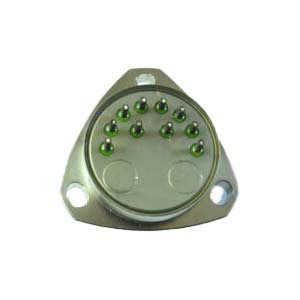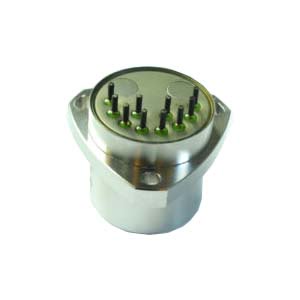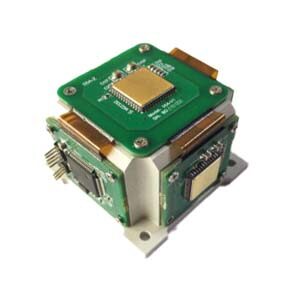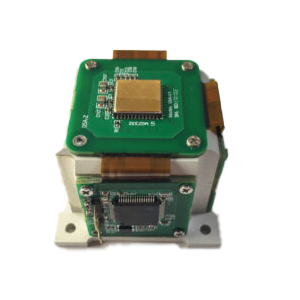An accelerometer is an instrument that measures the acceleration of a carrier line. An accelerometer consists of a detecting mass (also known as a sensitive mass), a support, a potentiometer, a spring, a damper, and a housing. Among them, the accelerometer used in the measurement of aircraft overload is one of the earliest aircraft instruments. Features of the accelerometer: excellent deviation stability, good environmental performance, low cost, low voltage analog output, overcurrent protection, LCC48, integrated temperature sensor, etc.
An accelerometer is a tool that measures proper acceleration. [1] Proper acceleration is the acceleration (the rate of change of velocity) of a body in its own instantaneous rest frame; [2] this is different from coordinate acceleration, which is acceleration in a fixed coordinate system. For example, an accelerometer at rest on the surface of the Earth will measure an acceleration due to Earth’s gravity, straight upwards [3] (by definition) of g ≈ 9.81 m/s2. By contrast, accelerometers in free fall (falling toward the center of the Earth at a rate of about 9.81 m/s2) will measure zero.
The components of common accelerometers are as follows: housing (fixed to the measured object), reference mass, sensitive components, signal output, etc. Accelerometers require a certain range and accuracy, sensitivity, etc., and these requirements are often contradictory to some extent. Accelerometers based on the same principle have different ranges (from a few g to hundreds of thousands of g), and their sensitivity to sudden acceleration frequency is also different.
An accelerometer consists of a detecting mass (also known as a sensitive mass), a support, a potentiometer, a spring, a damper, and a housing. The detected mass is bound by the support to move only along one axis, which is often called the input axis or the sensitive axis. When the instrument housing accelerates along the sensitive axis with the carrier, the measuring mass with certain inertia tries to keep its original motion state unchanged according to Newton's law. The relative motion between it and the shell will deform the spring, so the detection mass will accelerate under the action of the spring force. When the spring force is balanced with the inertial force generated by the accelerated movement of the detection mass, there is no longer relative motion between the shells, and the deformation of the spring reflects the magnitude of the measured acceleration. The potentiometer is used as a displacement sensing element to convert the acceleration signal into an electrical signal for output. The accelerometer is essentially a one degree of freedom oscillation system, and dampers must be used to improve the dynamic quality of the system.
Accelerometers have many uses in industry and science. Highly sensitive accelerometers are used in inertial navigation systems for aircraft and missiles. Vibration in rotating machines is monitored by accelerometers. They are used in tablet computers and digital cameras so that images on screens are always displayed upright. In unmanned aerial vehicles, accelerometers help to stabilise flight.
When two or more accelerometers are coordinated with one another, they can measure differences in proper acceleration, particularly gravity, over their separation in space—that is, the gradient of the gravitational field. Gravity gradiometry is useful because absolute gravity is a weak effect and depends on the local density of the Earth, which is quite variable.
Single- and multi-axis accelerometers can detect both the magnitude and the direction of the proper acceleration, as a vector quantity, and can be used to sense orientation (because the direction of weight changes), coordinate acceleration, vibration, shock, and falling in a resistive medium (a case in which the proper acceleration changes, increasing from zero). Micromachined microelectromechanical systems (MEMS) accelerometers are increasingly present in portable electronic devices and video-game controllers, to detect changes in the positions of these devices.
More Technical Questions
1.How is the Package Features of MEMS Accelerometer?
2.How does the Quartz Accelerometer Work?
3.Accelerometer Technical Information
4.What Effect Does Temperature Have on Quartz Flexible Accelerometer?
5.Application of mems accelerometer in petroleum logging
6.Why do we Need Accelerometer?
Products in Article







